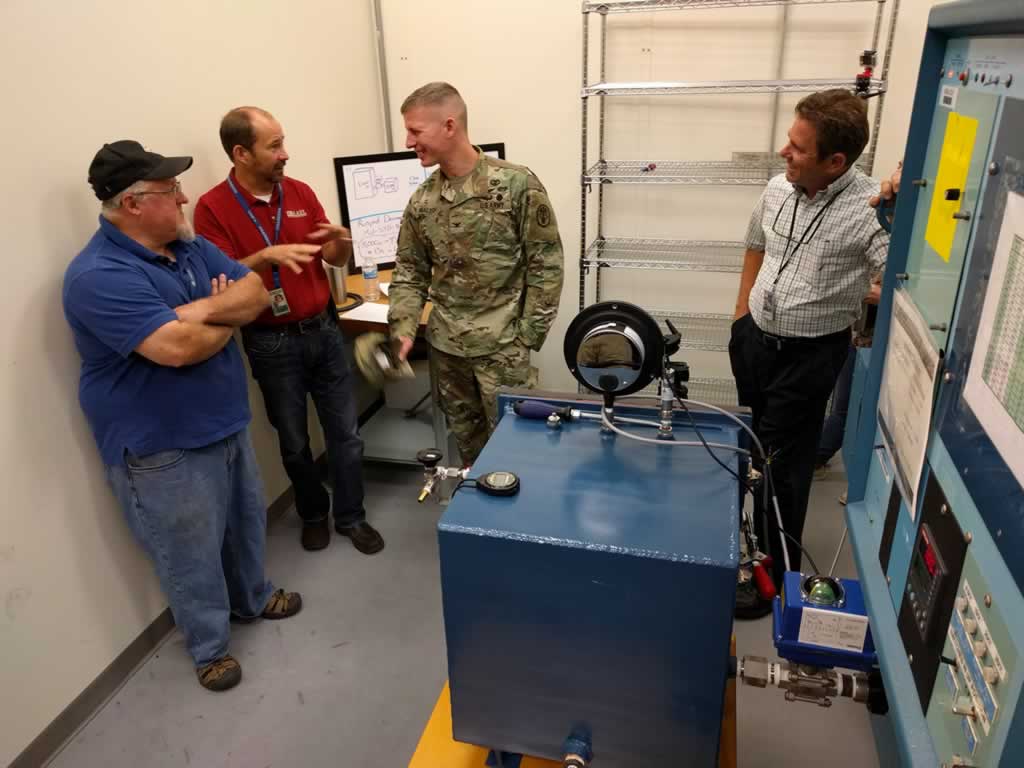USAARL Simulates Aircraft Rapid Decompression

Col. Richard Malish, USAARL commander, receives a demonstration of USAARL's new rapid decompression chamber. The chamber, designed by USAARL fabricators, simulates a rapid decrease in aircraft cabin pressure as the altitude increases from 8,000 to 45,000 feet.
Posted May 31st, 2017
Story & Photo by: Catherine Davis, USAARL Public Affairs Officer
The U.S. Army Aeromedical Research Laboratory’s Airworthiness Certification and Evaluation Division is the U.S. Army’s center of excellence for providing a joint test, evaluation, and certification program focused on carry-on medical equipment used by military health care providers during aeromedical evacuation transport of wounded Warfighters and Soldiers from the battlefield to more definitive healthcare.
As part of expanding USAARL’s airworthiness testing capability, the ACE Division can now test an in-flight emergency by simulating, in a static chamber, an abrupt change in cabin pressurization, or rapid decompression, from 8,000 to 45,000 feet. Rapid decompression is often caused by a sudden rupture in the aircraft fuselage, loss of a window, or cargo door separation.
“The decompression chamber was designed and developed by USAARL’s skilled engineers and machinists,” said David Jones, ACE Division chief. “This in-house effort will reduce test time and costs of future carry-on medical airworthiness certification programs.”
The new chamber is among several other in-house testing platforms including an altitude chamber, a blowing rain chamber (also developed by USAARL engineers and machinist), and climatic chambers.
Medical carry-on devices must pass rigorous airworthiness testing in accordance with the Joint En route Care Equipment Test Standard-Revision 1 to ensure that the equipment continues to perform to the manufacturer’s specifications while exposed to the harsh enroute care environments, promoting the safe interaction among the medical equipment, patients, aircrew, and the aircraft.
Since 2012, JECETS has become widely accepted and recognized as the joint service standard for testing medical carry-on items for use aboard U.S. Army rotary-wing helicopters and U.S. Air Force fixed-wing aircraft.
back to top
Last Modified Date: 2021-07-12